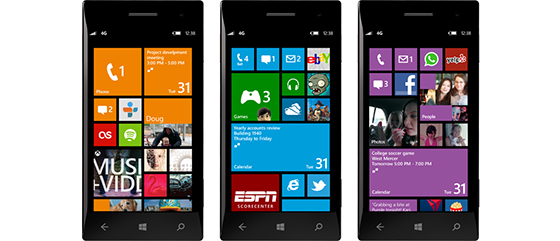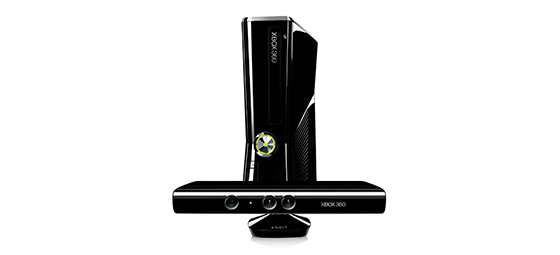Three screens and a cloud: can Microsoft deliver with Windows 8, Windows Phone 8, and Xbox?

June has been a busy month for Microsoft so far, from E3 to its Surface hardware andWindows Phone 8 software, but there's still a lot more to come over the summer. Suddenly, it feels like Microsoft has everyone talking, discussing the positives and negatives of the company's new approach. A bold unification of its Metro design across tablets, desktops, smartphones, and Xbox appears to be setting the stage for the multi-device convergence that the company has been promising for over three years, but will it finally deliver?
Microsoft's former chief software architect, Ray Ozzie, coined the phrase "three screens and a cloud" back in early 2009. The strategy is based on an idea that PCs, phones, and TVs should share similar data, apps, and services seamlessly through a network connection and server-based cloud storage. Ozzie helped launch Microsoft's Azure cloud platform, a service that hosts data and applications for companies like Boeing, NASA, easyJet, and even parts of Apple's iCloud. Ozzie's promise hasn't really materialized in the consumer space, though, despite Microsoft's cloud work faring well in the enterprise.
TO THE CLOUD
Commercials like "to the cloud" or a series of "family" ads have failed to convey the same simplicity and ease as Apple's iCloud approach, where consumers simply take a picture on one device and have it "magically" appear on another. The fragmented nature of Microsoft's internal groups and the company's marketing teams are largely to blame, but after a reorganization earlier this year, it appears that Microsoft might be readying a clear message for Windows 8, Windows Phone 8, and Xbox.
The first evidence of this came at E3 this year. Microsoft unveiled SmartGlass, a companion app for mobile devices and Windows 8 PCs that lets you control and interact with videos and games you play on the Xbox 360. It's a new platform for content providers and games makers to use a mobile device as a secondary display or a controller. Apple has its own AirPlay technology and Remote iOS apps to control its Apple TV device, but Microsoft's solution expands on this by building it into a platform in its own right that's available across Windows-, Android-, and iOS-powered devices. Microsoft has only scratched the surface with its SmartGlass details, and with the release of an SDK this week we should start to learn more about where developers will take the platform.

AGGRESSIVE WITH MICROSOFT SURFACE
Microsoft's second major announcement this month was the unveiling of its Surface tablets. Available later this year in Windows RT and Windows 8 Pro editions, the Microsoft Surface marks the company's first entry into PC hardware. Microsoft has clearly decided that its trusted partners and OEMs aren't doing a good enough job when it comes to tablets and it wants to lead the way. It's a surprising move from the company and one that places it as a direct competitor to some of its closest allies in the war against Google and Apple. However, it also provides an insight into how the Surface and Windows 8 might be marketed: aggressively. If the promo video is anything to go by, then there's no more dancing dads or flipping tables, it's "hello Apple and Google, we're Microsoft." Some have accused Microsoft ofcopying Apple's iPad introduction, while others have mocked a crash during its keynote — demonstrating some common perceptions that the company is, on a fundamental level, a stumbling giant that's slow to respond. One thing everyone is doing is discussing Microsoft, though.

This trend of conversation continued into the latter part of the week with the introduction of Windows Phone 8. Existing Windows Phone users have expressed their disappointment at the lack of a Windows Phone 8 upgrade, but the hardware and software improvements point towards a strong opportunity to deliver Microsoft's three screens promise. Windows Phone 8 builds off the Windows 8 kernel, allowing app developers to more easily create apps for both using native code and DirectX. Although Microsoft didn't discuss its SkyDrive cloud strategy for Windows Phone 8, there's a clear synergy for its NFC implementation and leaked details suggest cloud storage will be built-in. If developers are able to utilize this SkyDrive cloud storage in a similar way to Windows 8's implementation, then it could be another key part of delivering a coherent consumer message.
Microsoft has also been aggressive in its SkyDrive marketing and iteration of software updates. The company unveiled Dropbox-like applications for Windows and Mac in late April, just ahead of bitter rival Google with its Drive service. There's a sense here that if Microsoft can improve its consumer marketing up to Apple's standards then it can succeed against its competitors. The integration of SkyDrive across its services, especially Windows Phone 8 and Xbox, will need to follow Windows 8's approach. Available as a separate app that uses Windows 8's Contracts system, SkyDrive allows other Metro style apps to fetch and save files directly from its cloud. If a similar approach is employed on the company's Xbox system, then the final jigsaw piece in Microsoft's three screens puzzle would slot into place.

XBOX IS THE KEY TO THREE-SCREEN SUCCESS
We've discovered a number of plans for Microsoft's next-generation Xbox this week, including confirmation that it will include a unified Windows 8 foundation to make it easier for application developers to build apps that target Xbox, PC, and Windows Phone. The company unveiled a number of Xbox TV apps for its new Metro-powered dashboard last December, but it's still not clear whether it will open its platform up ahead of a next-generation Xbox. Microsoft is bringing Internet Explorer to Xbox later this year, alongside a new Xbox Music servicedesigned to replace the company's Zune offering. We're expecting both to feature cloud integration, and Microsoft has confirmed that Xbox Music will be available on Windows 8 and Windows Phone 8.
Microsoft's most testing time will come in October, when the software giant looks set to deliver some of its next-generation products. We've heard that Windows 8 is tentatively set for a mid-October release, with a late October debut for Windows Phone 8. Microsoft has clearly put the wheels in motion towards a message of three screens and a cloud in its individual products, but can it now deliver on the marketing side? It has raced to release SkyDrive on the desktop ahead of Google, and even its own tablet before arumored Nexus Android one — so it wants to be in the game here. What will set it apart is the execution of its three-year-old strategy for this particular match. If Microsoft doesn't up its marketing game or makes some pricing mistakes, then its hard work will be worth nothing. It's three screens and a cloud or three yards and a cloud of dust, game on.


 Tuesday, June 26, 2012
Tuesday, June 26, 2012
 Unknown
Unknown

0 comments:
Post a Comment